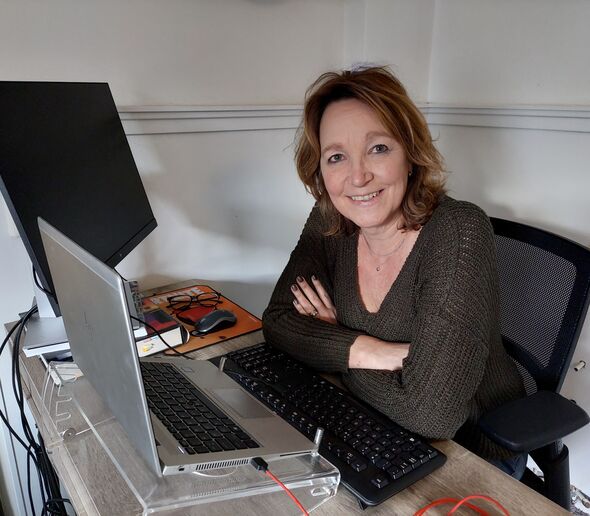EES asks employees about well-being
In the second week of February it will land in the mailboxes of all 6500 TU/e employees: the Employee Experience Survey, in short EES. The questionnaire addresses subjects like workload, employment terms and conditions, contact with your manager, and career possibilities. A pilot revealed privacy to be a concern among employees. "As well as the EES, tools are being developed so that rather than end up on a shelf somewhere, the results can be applied across the university," says EES project leader Monique van der Hagen-de Boer.
Now and again a survey on one or other topic, such as working during corona, has been held, but the last broad employee survey – that is years ago, tells Monique van der Hagen-de Boer. She explains that the Employee Experience Survey (EES) has arisen from the Strategy 2030 agenda. “Which includes the quality assurance framework specific to service, otherwise known as Quality of Service Performance. The survey is a subproject within QSP.”
Van der Hagen, in daily life an HR advisor with a focus on employee well-being, is leading the project. “We have put together a project group, and we are taking substantive advice from a sounding board group.” Among these advisors are Full Professor Eva Demerouti, an expert in work and organizational psychology, University Council member Martijn Klabbers and Patrick Groothuis, who is responsible for QSP.
The survey is being carried out by IVA Onderwijs. “This agency has a lot of experience of working with surveys like this and also conducts them at other universities, such as TU Delft, which makes external benchmarking possible.”
Work pressure
“As a project group we brainstormed on the themes, which include workload, social safety, employee participation, leadership,” says Van der Hagen. “IVA Onderwijs has a database of validated sets of questions relevant to our themes, from which we selected questions, with the help of relevant specialists at TU/e. In this way we made the survey as complete as can be.”
The great majority of the questions are closed questions, in order to keep the processing and benchmarking of the replies manageable. But now and again a subject requires an exception, says Van der Hagen: “For example, after the pilot we added an open question to the category ‘work pressure’, because it turned out that employees were keen to add explanatory notes to their answers.”
PhDs
Where possible, the EES dovetails with other studies. Thus, PhD candidates can skip part of the questionnaire. Instead, they get an extra questionnaire, which is part of a national study being conducted among doctoral candidates.
“We are also using the EES to measure the psychosocial workload of our employees. TU/e is required to do this as part of its Risk Inventory and Evaluation (RI&E),” says Van der Hagen.
Response
To disseminate the survey Van der Hagen is working with the managing directors. “They play a key role in motivating employees to take part. The announcement of the survey will be sent via the directors' mailboxes. This will send a clear message that they believe it is important.”
A total response rate of at least 50 percent is needed, but if this were to edge towards 80 percent, so much the better, says Van der Hagen. A pilot held at the Department of Biomedical Engineering (BME) and Real Estate (RE) produced a response rate of 55 and 78 percent respectively. “As we understand it from IVA Onderwijs, this difference between departments and services typically occurs at universities.”
The findings of the pilot survey is a topic on which Van der Hagen can as yet say nothing. “That could influence the results of the full-scale survey. But what I can say is that in general the answers were very positive, although there's still room for improvement.”
Incidentally, employees at BME and Real Estate won't have to do the survey again. “Although some questions were refined after the pilot, their answers will simply be included with the other results and comparisons.”
Traceability
The evaluation of the pilot showed that many employees were keen to ensure their privacy: what if my boss can trace a critical comment back to me? No one need worry about this, Van der Hagen is quick to emphasize.
“We deliberately chose to have all data sent to IVA Onderwijs, none of it is sent to anyone at TU/e. In addition, the analysis won't include any statements about a particular group if fewer than ten employees from that group completed the survey. This is to ensure the answers cannot be traced back to individuals. If your team is smaller than ten people, the results for your team won't be published at team level, they'll be included in the level above your team, provided enough people complete the survey.”
After the pilot was held, the project group clarified its message about the steps taken to ensure privacy. This has been posted in various places, including the intranet page devoted to EES.
Follow-up steps
A broad survey among all approx. 6500 TU/e employees (approx. 4000 on the payroll and approx. 2500 in fixed-term employment constructions), that is a big project. How can we make sure the findings don't end up gathering dust on a shelf somewhere? This is something we are specifically guarding against, says Van der Hagen.
“ Every team will get together to discuss the reporting on its own service or department, or – where possible – on itself. A specially developed discussion tool will help teams focus on what is going well and what can be improved, at departmental level and at team level. Every department and service will then draw up a plan of action and set to work.”
There will also be reporting at TU/e level.
And funding the improvements? This is outside Van der Hagen's remit, although she can say this: “Many of the subjects in the survey play into themes that have long been relevant at TU/e, and also nationally, such as social safety, work pressure and leadership. I am confident that ways will always be found to put good plans into practice.”



Discussion